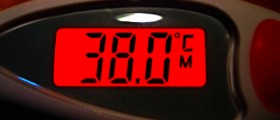
The problem with timing intercourse for conception is that not every woman ovulates at the exact midpoint of her menstrual period, and not every menstrual period is 28 days long. If the period is 28 days long, then conception is mostly likely when intercourse is consummated on days 11 to 16, just before the egg is released, to about two days after. Some women, however, ovulate a day or two later in their periods. And it's not unheard of for women to have menstrual cycles as short as 20 days or as long as 42 days. If the male partner has an unusually high sperm count, timing ovulation is not quite as important. But if there is any problem with the sperm count, then intercourse needs to timed for maximum chances of conception.
An online ovulation calendar is useful if you know the length of period, length of the luteal phase, and date of last menstruation - and periods are regular. Otherwise, it may be better to chart basal body temperature and cervical mucus to estimate the date of ovulation. If you just don't want to inspect cervical mucus, it's possible to estimate the date of ovulation by increase in body temperature - but the method won't work unless the temperature is taken at the same time of day and after rest, preferably first thing in the morning. Even then, the method is only about 85% accurate.
A much more accurate approach to timing conception is a fertility monitor, using test strips to measure increases and peaks in the hormones associated with ovulation. Even these methods, however, have to be used consistently, the same way, every day, starting early enough in the period to observe ovulation and late enough to avoid using too many expensive test strips. Whichever methods you use to time intercourse for conception, however, there is one right time for couples over 35 to get pregnant: Now. Never use any method for assisting conception for more than six months without consulting a physician to see if there isn't a better way to achieve success while trying to conceive.
















Your thoughts on this
Loading...